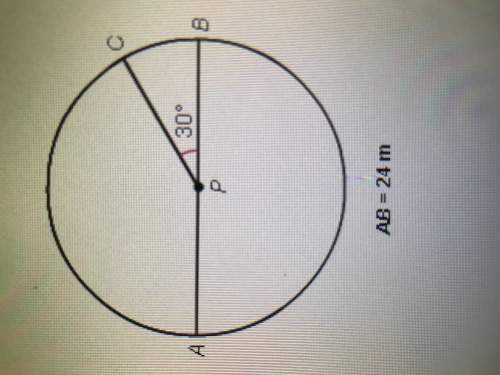
Mathematics, 01.04.2020 04:33, kbruner20
A fair die, with its faces numbered from 1 to 6, is one in which each number is equally likely to land face up when the die is rolled. On a fair die, the probability that the number 6 will land face up is 16. A group of students wanted to investigate a claim about manipulating a fair die so that it favors one outcome. The claim states that if a fair die is put into an oven and baked at 200°F for 10 minutes, the inside of the die will begin to melt. When the die cools, the inside will be solid again, but with more weight toward the bottom. This shift in weight will cause the face that was up when the die cooled to land up more often that the other faces.
The students obtained a fair die and baked it according to the preceding directions. The die cooled with the number 6 face up. After the die cooled, they rolled the die 200 times, and the number 6 landed face up 43 times. Let p represent the population proportion of times the number 6 will land face up on the baked die if the die could be rolled an infinite number of times.
A)Clarke, one of the students, constructed a 95 percent confidence interval for p as 0.215±0.057. Does the interval provide convincing statistical evidence that the number 6 will land face up more often on the baked die than on a fair die? Explain your reasoning.
B)Aurelia, another student, suggested they conduct a significance test to investigate the claim. She tested the hypotheses H0:p=16 versus Ha:p>16 at the significance level of α=0.05. She obtained a test statistic of 1.83 with a p-value of 0.033. Do the results of the significance test agree with the results of Clarke’s confidence interval in part (a)? Explain your reasoning.
C)Two standard normal curves are shown below, one for the confidence interval calculated in part (a) and one for the significance test conducted in part (b).
(i) For the confidence interval curve, label the critical values for the 95% confidence level and shade the area that represents values in the outer 5%.
(ii) For the significance test curve, label the critical value for the 5% significance level and shade the area representing the values of z that would lead to a rejection of the null hypothesis in part (b).
The figure presents two graphs, the first labeled Confidence Interval and the second labeled Hypothesis Test. Each graph is a normal distribution curve with the horizontal axis labeled z. Each graph has a tick mark labeled 0 on the horizontal axis at the mean of the distribution. The graph labeled Confidence Interval has two vertical dashed lines drawn from the curve to the axis, one to the left and one to the right of the mean of distribution. The graph labeled Hypothesis Test has one vertical dashed line drawn from the curve to the axis to the right of the mean of distribution.
D) Joachim, a third student, noted that the confidence interval in part (a) gives plausible values of the parameter as an interval between two values. He suggested that they develop a one-sided confidence interval because they were only concerned with whether the number 6 was landing face up more often than expected, not less often. The one sided-interval will determine a value L such that all plausible values of p are greater than L. The formula for L is L=pˆ+z∗pˆ(1−pˆ)n−−−−−√.
(i) Determine the values of z∗ needed to create the one-sided 95 percent confidence interval. Then calculate the value of L.
(ii) Do the results of Joachim’s one-sided confidence interval agree with results of Aurelia’s significance test in part (b)? Explain your reasoning.

Answers: 1
Other questions on the subject: Mathematics


Mathematics, 22.06.2019 01:20, Hockeypro1127
The bottom of a slide at the playground is 6 feet from the base of the play set. the length of the slide is 10 feet. how tall is the slide. 11.66 feet 10 feet 6 feet 8 feet
Answers: 2

Mathematics, 22.06.2019 01:50, iiMxlissaii
Grandpa ernie is shrinking! over the past 4 years his height decreased by a total of 2.4 cm. it decreased by the same amount each year. what was the change in grandpa ernie's height each year
Answers: 2
Do you know the correct answer?
A fair die, with its faces numbered from 1 to 6, is one in which each number is equally likely to la...
Questions in other subjects:

Mathematics, 25.05.2021 07:00




History, 25.05.2021 07:00



History, 25.05.2021 07:00

Mathematics, 25.05.2021 07:00

Mathematics, 25.05.2021 07:00







